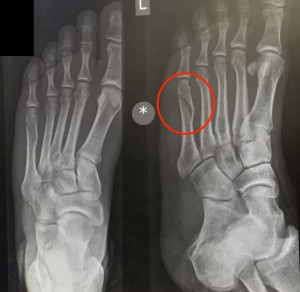

- #FOOT TURNING OUTWARD IN ADULTS HOW TO#
- #FOOT TURNING OUTWARD IN ADULTS MANUAL#
- #FOOT TURNING OUTWARD IN ADULTS SERIES#
This type of surgery can also prevent future deformities. Muscle Lengthening: Muscle lengthening procedures are used to improve motion in the joints to help with walking.Joint Fusion: Fusion of the joints can provide long-term support of the skeletal system for children with severe deformities.Bony Reconstruction: Bony reconstruction is designed to fix joint positioning, which can provide relief for abnormalities that make using braces difficult.Surgeries for cerebral palsy foot problems include: Surgeries are usually designed to correct as many cerebral palsy foot problems as possible in one procedure. Braces can be used to help prevent the clubfoot from returning once it is corrected.Ĭhildren become candidates for surgery between the ages of 6 and 10.
#FOOT TURNING OUTWARD IN ADULTS SERIES#
The treatment involves a series of casts over several weeks until the foot position improves. Casting has been found to be especially effective in clubfoot.
#FOOT TURNING OUTWARD IN ADULTS MANUAL#
Manual therapy is a form of physical therapy that includes kneading and manipulating muscles and joints.īraces and casts may also be used to treat cerebral palsy foot problems. Other common nonsurgical treatments for cerebral palsy foot problems include orthotic shoe inserts and manual therapy. While Botox injections can be highly effective, the benefits are temporary, so injections must be repeated. This may include spasticity treatment, such as botulinum toxin (Botox®) to relax tight muscles. Treatment for Cerebral Palsy Foot ProblemsĬhildren under 5 years of age are generally treated nonsurgically. This allows targeted treatment that may lead to significant improvement in function.
#FOOT TURNING OUTWARD IN ADULTS HOW TO#
Motion analysis provides orthopedists with a better understanding of how to accurately diagnose cerebral palsy foot problems.

Hip Dysplasia: Hip dysplasia occurs when a hip socket doesn’t cover the ball at the top of the thigh bone.High Arches: Muscle contracture can cause the feet to lack flexibility which creates a very high arch.When this is combined with impaired functioning of the lower extremities, it can also cause the foot to drag along the ground. Flat Feet: Low muscle tone in cerebral palsy can lead to flat feet, with either no arch or only a slight arch.Clubfoot: This occurs when the foot is severely turned in and upwards so that it faces sideways.Other cerebral palsy foot problems include: This type of cerebral palsy foot problem is usually part of a larger issue in the lower extremities, which includes legs, ankles, and feet. The most common foot disorder to occur in children with cerebral palsy is called equinus deformity, which causes the foot to point downwards. The type of cerebral palsy foot problems a child may develop can vary greatly and is often unpredictable before age five. In fact, cerebral palsy foot problems are the most common musculoskeletal problem in children with the condition. By Cerebral Palsy Guide on ApOctober 4, 2021Ĭhildren with cerebral palsy may develop various musculoskeletal problems such as bone deformities, dislocated joints, and contracted muscles that lead to issues with the feet.


 0 kommentar(er)
0 kommentar(er)
